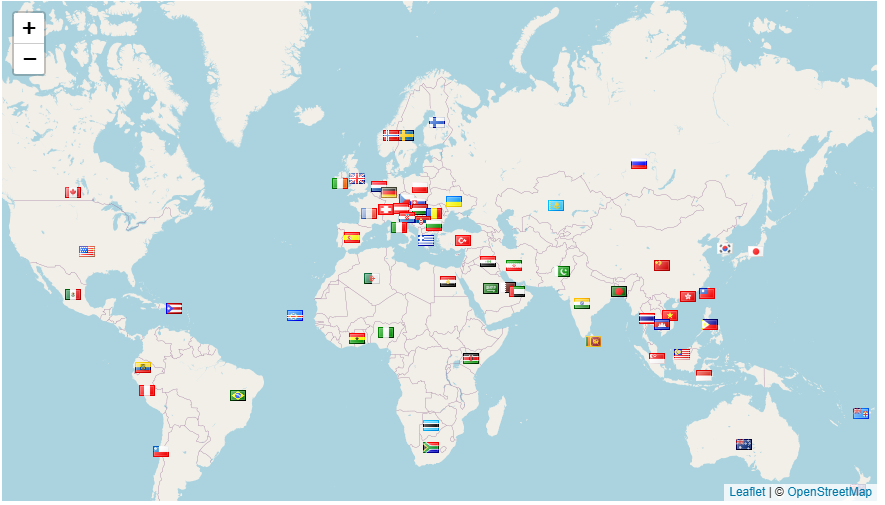Analysis of The Stability Plan for Kambaniru Weir, East Sumba District
DOI:
https://doi.org/10.70822/journalofevrmata.v2i02.65Keywords:
Dam, Stability analysis, Soil mechanics, Weir design, Shear force, Soil bearing capacity, Earthquake analysisAbstract
This research aims to analyze the stability of the Kambaniru Dam which is located in the Luku Kambaniru River, East Sumba Regency, East Nusa Tenggara Province. In this research, a preparatory stage was carried out which included literature study and field observations to collect weir design data and soil mechanics data. The data is then analyzed using an appropriate formula to evaluate the stability of the weir. The results of the data analysis were used to prepare a final report examining the performance of Kambaniru Dam stability planning. The calculation results show that the weir with the planned dimensions, namely 7.00 m high and 69.40 m wide, equipped with a 30 m long energy absorber, meets high safety standards. Stability analysis shows that the safety value (Sf) in terms of overturning force, shear force and soil bearing capacity under normal and flood conditions (with and without an earthquake) exceeds 1.5, indicating that this weir is in a safe condition. Therefore, the construction of the Kambaniru Dam according to the planned dimensions is considered reliable and safe.
References
L. Wang et al., “Massive Riverbed Erosion Induced by Inappropriate Grade Control: A Case Study in a Large-scale Compound Channel,” J. Hydrol., vol. 612, no. PC, p. 128313, 2022, doi: 10.1016/j.jhydrol.2022.128313.
A. Ehsanifar, M. Ghodsian, and C. Abdi Chooplou, “Experimental investigation of flow splitters’ impact on the hydraulics of Piano Key Weirs,” Flow Meas. Instrum., vol. 100, no. May, p. 102683, 2024, doi: 10.1016/j.flowmeasinst.2024.102683.
R. L. Segura, V. Fréchette, B. Miquel, and P. Paultre, “Dual layer metamodel-based safety assessment for rock wedge stability of a free-crested weir,” Eng. Struct., vol. 268, no. July, 2022, doi: 10.1016/j.engstruct.2022.114691.
F. Rivera-Trejo, A. Radecki-Pawlik, J. Filipczyk, G. Priego-Hernandez, and G. Soto-Cortes, “On predicting of some consequences of planned dam construction in a pristine sand-gravel river large catchment: Rio San Pedro, Nayarit, Northwest Mexico,” Ecol. Eng., vol. 184, no. April, p. 106785, 2022, doi: 10.1016/j.ecoleng.2022.106785.
H. Chanson and R. Shi, “Modelling spillway and weir operation during major overflows. On optical measurements in prototypes: pros and cons,” Flow Meas. Instrum., vol. 98, no. August 2023, p. 102643, 2024, doi: 10.1016/j.flowmeasinst.2024.102643.
U. Atique, S. Kwon, and K. G. An, “Linking weir imprints with riverine water chemistry, microhabitat alterations, fish assemblages, chlorophyll-nutrient dynamics, and ecological health assessments,” Ecol. Indic., vol. 117, no. July, p. 106652, 2020, doi: 10.1016/j.ecolind.2020.106652.
C. Zhang, L. Zhang, S. Zhang, J. Cheng, and Z. Wang, “Hydraulic analysis of advanced spillway systems in tailings dams under extreme weather conditions,” Alexandria Eng. J., vol. 109, no. March, pp. 102–111, 2024, doi: 10.1016/j.aej.2024.08.026.
L. Elles et al., “Supporting conservation planning in a national biodiversity hotspot – Projecting species composition across a groundwater level gradient using a demographic forest model,” Ecol. Modell., vol. 501, no. May 2024, p. 110996, 2025, doi: 10.1016/j.ecolmodel.2024.110996.
C. Lin et al., “Spatio-temporal variability (up- and down-stream and three seasons) of response patterns of macroinvertebrates to commonly applied low-head concrete weirs under reclaimed water intervention in urban river restoration,” J. Clean. Prod., vol. 370, no. July, p. 133544, 2022, doi: 10.1016/j.jclepro.2022.133544.
S. Sakib, G. Besse, P. Yin, D. Gang, and D. Hayes, “Sediment transport simulation and design optimization of a novel marsh shoreline protection technology using computational fluid dynamics (CFD) modeling,” Int. J. Sediment Res., vol. 37, no. 1, pp. 14–25, 2022, doi: 10.1016/j.ijsrc.2021.06.004.
S. Baharvand and B. Laskar-Ara, “Hydraulic design criteria of the modified meander C-type fishway using the combined experimental and CFD models,” Ecol. Eng., vol. 164, no. December 2020, p. 106207, 2021, doi: 10.1016/j.ecoleng.2021.106207.
F. Wang, S. Zheng, Y. Ren, W. Liu, and C. Wu, “Application of hybrid neural network in discharge coefficient prediction of triangular labyrinth weir,” Flow Meas. Instrum., vol. 83, no. November 2021, p. 102108, 2022, doi: 10.1016/j.flowmeasinst.2021.102108.
M. M. Ibrahim, M. A. Refaie, and A. M. Ibraheem, “Flow characteristics downstream stepped back weir with bed water jets,” Ain Shams Eng. J., vol. 13, no. 2, p. 101558, 2022, doi: 10.1016/j.asej.2021.08.003.
Z. Dai et al., “Numerical investigation on Re-oxygenation efficiency of stepped overflow weir in urban stream,” J. Clean. Prod., vol. 258, 2020, doi: 10.1016/j.jclepro.2020.120583.
D. Singh and M. Kumar, “Energy dissipation of flow over the type-B Piano Key Weir,” Flow Meas. Instrum., vol. 83, no. November 2021, p. 102109, 2022, doi: 10.1016/j.flowmeasinst.2021.102109.
A. B. Amsie, A. T. Ayalew, Z. M. Mada, and M. M. Finsa, “Acclimatize experimental approach to adjudicate hydraulic coefficients under different bed material configurations and slopes with and without weir,” Heliyon, vol. 10, no. 11, p. e32162, 2024, doi: 10.1016/j.heliyon.2024.e32162.
A. Ferdowsi, M. Valikhan-Anaraki, S. F. Mousavi, S. Farzin, and S. Mirjalili, “Developing a model for multi-objective optimization of open channels and labyrinth weirs: Theory and application in Isfahan Irrigation Networks,” Flow Meas. Instrum., vol. 80, no. August 2020, p. 101971, 2021, doi: 10.1016/j.flowmeasinst.2021.101971.
C. Abdi Chooplou, M. Ghodsian, and M. Vaghefi, “Influence of outlet keys slope on downstream bed topography in trapezoidal piano key weirs: An experimental investigation,” Results Eng., vol.
Downloads
Published
Issue
Section
License
Copyright (c) 2024 suhudi suhudi, Kiki Frida S, Fifi Damayanti

This work is licensed under a Creative Commons Attribution 4.0 International License.







